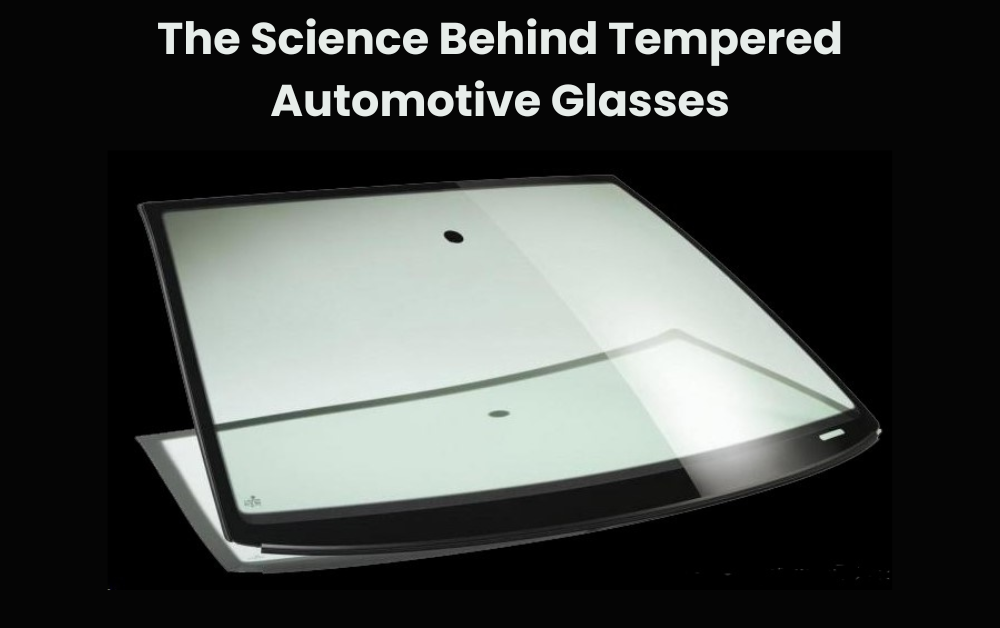When we think about cars, we often focus on their speed, design, or fuel efficiency. However, one critical aspect that ensures our safety often goes unnoticed: the glass. Automotive glass plays a crucial role in protecting passengers, and one of the most important types of automotive glass is tempered glass. In this blog post, we will explore the science behind tempered automotive glass, how it is made, and why it is essential for our safety.
What is Tempered Automotive Glass?
Tempered automotive glasses is a type of safety glass that is processed by controlled thermal or chemical treatments to increase its strength compared to normal glass. This glass is used in various parts of a vehicle, such as side windows and rear windows. The unique properties of tempered glass make it an ideal choice for automotive applications.
Key Characteristics of Tempered Glass
Tempered glass is four to five times stronger than regular glass. This increased strength comes from the manufacturing process, which involves heating the glass to very high temperatures and then rapidly cooling it. This process creates a balance of internal stresses that makes the glass much stronger.
Another important characteristic of tempered glass is how it breaks. Unlike regular glass, which can shatter into sharp, jagged pieces, tempered glass breaks into small, blunt pieces. These pieces are less likely to cause injury, making tempered glass much safer in the event of an accident.
The Manufacturing Process of Tempered Glass
To understand why tempered glass is so strong, it’s helpful to know how it’s made. The manufacturing process involves several steps, each crucial to the final product’s strength and safety.
Step 1: Cutting and Shaping
The first step in making tempered glass is cutting and shaping. Large sheets of glass are cut to the desired size and shape. This step is important because once the glass is tempered, it cannot be cut or reshaped without losing its strength.
Step 2: Heating
Next, the glass is heated to a very high temperature, usually around 620 degrees Celsius (1148 degrees Fahrenheit). This heating process is done in a furnace and is carefully controlled to ensure the glass heats evenly.
Step 3: Rapid Cooling
After the glass is heated, it undergoes rapid cooling, also known as quenching. Air is blown onto both surfaces of the glass to cool it quickly and evenly. This rapid cooling process is what gives tempered glass its strength. The outer surfaces of the glass cool and harden first, creating a layer of compression, while the inner part of the glass remains in tension.
Step 4: Inspection and Testing
The final step in the manufacturing process is inspection and testing. Each piece of tempered glass is inspected for defects and tested to ensure it meets safety standards. This step is crucial to ensure that the glass will perform as expected in real-world conditions.
The Science Behind Tempered Glass Strength

The strength of tempered glass comes from the internal stresses created during the manufacturing process. When the glass is rapidly cooled, the outer surfaces go into compression, while the inner part is in tension. This balance of internal stresses makes the glass much stronger than regular glass.
Compression and Tension
Compression is a force that squeezes or compresses material together, while tension is a force that pulls or stretches material apart. In tempered glass, the outer surfaces are in compression, and the inner part is in tension. This balance of forces makes it very difficult for the glass to break.
When tempered glass does break, it shatters into small, blunt pieces. This happens because the internal stresses are released all at once, causing the glass to break into many small pieces rather than large, sharp shards. This characteristic makes tempered glass much safer than regular glass, as the small pieces are less likely to cause serious injury.
Why Tempered Glass is Essential for Automotive Safety
Tempered glass is used in many parts of a vehicle because of its strength and safety characteristics. Here are some reasons why tempered glass is essential for automotive safety:
Impact Resistance
One of the most important properties of tempered glass is its impact resistance. Because of the way it is made, tempered glass can withstand a significant amount of force without breaking. This makes it an ideal material for car windows, which must be able to withstand the impact of objects such as rocks and debris.
Protection from Accidents
In the event of an accident, tempered glass provides critical protection for passengers. Because it shatters into small, blunt pieces, tempered glass is less likely to cause serious injury compared to regular glass. This property is especially important for side and rear windows, which are more likely to break in an accident.
Enhanced Visibility
Clear, unbroken glass is essential for safe driving. Tempered glass is less likely to break, which means it helps maintain visibility in all driving conditions. This can help prevent accidents and improve overall road safety.
Durability and Longevity
Tempered glass is also more durable and longer-lasting than regular glass. It is more resistant to scratches and other forms of damage, which means it will remain clear and functional for longer. This durability makes tempered glass a cost-effective choice for automotive applications.
Where is Tempered Glass Used in Vehicles?
Tempered glass is used in several parts of a vehicle, each with its own specific safety requirements. Here are some of the most common applications of tempered glass in cars:
Side Windows
The side windows of a car are typically made from tempered glass. These windows need to be strong enough to withstand impacts from objects such as rocks and debris while driving. In the event of an accident, the tempered glass in the side windows will shatter into small, blunt pieces, reducing the risk of injury to passengers.
Rear Windows
The rear window of a car is also usually made from tempered glass. Like the side windows, the rear window needs to be strong enough to withstand impacts and provide clear visibility. In addition, the rear window often includes a defrosting element to keep it clear in cold weather. Tempered glass is ideal for this application because of its strength and durability.
Sunroofs
Many modern cars have sunroofs, which are also typically made from tempered glass. The strength and safety characteristics of tempered glass make it an ideal material for sunroofs, which need to be able to withstand impacts and provide clear visibility.
Windshields (Laminated Glass)
While most of the glass in a vehicle is tempered, the windshield is usually made from laminated glass. Laminated glass is made by sandwiching a layer of plastic between two layers of glass. This construction makes the windshield very strong and resistant to breaking. In the event of an accident, the plastic layer holds the glass together, preventing it from shattering and protecting the occupants of the vehicle. However, some windshields may also incorporate tempered glass for added strength.
Advances in Automotive Glass Technology
The automotive industry is continually evolving, and advances in glass technology are no exception. Here are some of the latest developments in automotive glass technology:
Acoustic Glass
Acoustic glass is designed to reduce noise inside the vehicle. It is made by adding a special layer to the glass that helps to absorb sound. This can make the interior of the car much quieter, providing a more comfortable driving experience.
Solar Control Glass
Solar control glass is designed to reduce the amount of heat that enters the vehicle from the sun. This can help keep the interior of the car cooler, reducing the need for air conditioning and improving fuel efficiency. Solar control glass can also help protect the interior of the car from UV damage.
Heated Glass
Heated glass is equipped with a heating element that can help to clear ice and snow from the windows. This is especially useful in cold climates, as it can improve visibility and make the car safer to drive in winter conditions.
Smart Glass
Smart glass, also known as switchable glass, can change its transparency at the touch of a button. This technology allows drivers to adjust the amount of light entering the vehicle, providing greater comfort and convenience. Smart glass can also help improve privacy and security.
Conclusion
Tempered automotive glass is a critical component of modern vehicles, providing essential safety and durability. Its unique properties, created through a careful manufacturing process, make it much stronger than regular glass and safer in the event of an accident. As technology continues to advance, we can expect to see even more innovations in automotive glass, further improving safety, comfort, and efficiency on the road.
Understanding the science behind tempered glass helps us appreciate the engineering that goes into making our cars safer and more reliable. The next time you drive, take a moment to think about the glass around you and the crucial role it plays in protecting you and your passengers.
Note :- Read more related blogs at https://findtec.co.uk/







